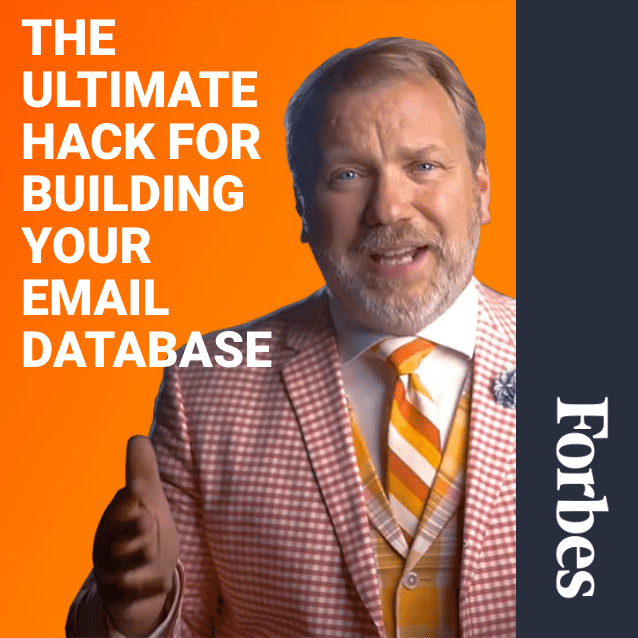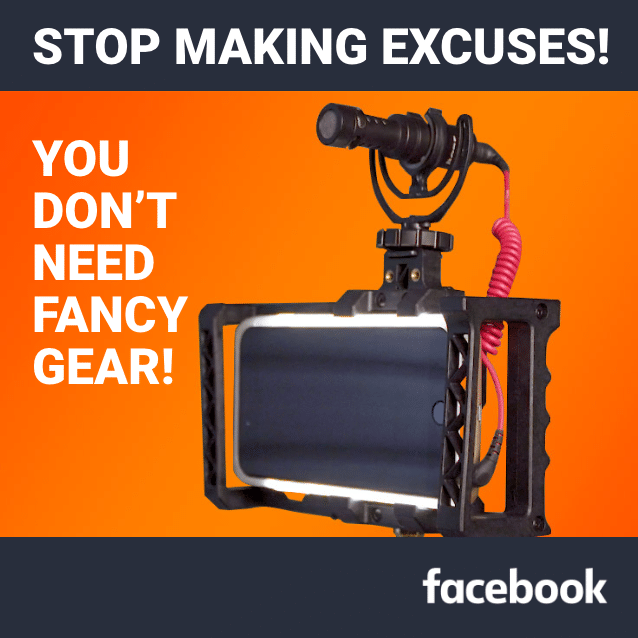Read the entire article on Forbes
We want to help you reach your business goals. Subscribe to get actionable Marketing and Leadership tactics and strategies in your inbox.
When it comes to controversial content, podcasts have it in the bag. I don’t mean the media genre itself is particularly racey; I’m talking about the way we consume it as a culture.
Not everyone listens to podcasts; those who do tend to be diehards of the medium while others have never so much as heard one. Oddly enough, it’s a fairly even split— with half of American homes listening to podcasts. That dichotomy isn’t present for many other media styles, but it actually lends a competitive edge to podcasts.
Listeners are extremely engaged— which is the ultimate buzzword for anyone marketing anything socially. Unlike social videos, like Facebook in-feed which holds an average watch time of 16.7 seconds, podcast listeners keep listening, with 80% listening to all of the episodes they begin— and that’s week after week.
More often than not, they’re listening when at home or in their car— which means they’ve got their attention available and focused on the content at hand (or ear). There’s no stream of vibrant ads fighting for attention in their peripherals like there is when scrolling on a newsfeed or website.
I’ve been leveraging the power of podcasting for 8 years and if you want to as well, utilize these 11 tips for getting started.
1.) Consider Your Motives
There’s a variety of goals that can be achieved with your podcast, and determining what your motive is prior to getting started is absolutely key. Whether you’re looking to increase your authority, grow your business, grow your audience or otherwise— your motivation for starting your podcast should inform the content you share when creating.
If your motivation is to make money via podcasting, understand that is by no means impossible— it’s just a tall order and you’ll need to be prepared to devote substantial time and effort to your cast in order to accomplish that goal.
2.) Be Real— Can You Be Consistent?
Ideally, you should be posting a new podcast every week. With the proliferation of content online, if you’re not posting regularly— you’re actively losing relevancy.
Can you create a calendar you can stick to? What would it look like? How much time do you need to devote to recording, editing (if need be) and syndicating? What day do you have the most time to post?
Make that your weekly syndication day and stick to it weekly. From there, if you can create more— do so!
3.) Identifying Your Niche
When your content lacks focus, your audience won’t know what to expect from your podcasts and, in turn, won’t know what to come to you for. While it can be hard to avoid talking about anything and everything you want, maintaining a focus for your show is integral to its potential success.
Think about your ideal listener and what you have to offer them— what do you talk about that immediately excites you? Start there and refine your idea until you can identify a true theme. Search what’s currently on iTunes for inspiration on both your niche and content.
4.) Why Your Name Matters
The title of your podcast should represent your style and give listeners an idea of what kind of topics you’ll be covering in your show. The title of my podcast is Think Tank Tuesday, which gives anyone looking at my show an idea of when they can expect to hear me, as well as indicates that the content will be informative.
When you’ve found a title you’re interested in, search podcast platforms for it to make sure it’s not already being used, as well as to ensure there aren’t others that sound too similar.
5.) The Importance Of Intros & Outros
While you shouldn’t hold yourself too strictly to any script or guideline when recording your show content, it’s always a good idea to plan out your intros and outros— that way you’ll never forget to plug any necessary details. They should serve as the thread of continuity connecting each episode together.
Your intros and outros should include a brief synopsis of what can be expected, a short personal introduction and a teaser for what’s to come.
Most importantly, your outro should include a reminder to like, comment, share or subscribe to your content— these things are what will make your cast grow.
6.) Create Quality Thumbnails
Your podcast is entirely audio, so your show thumbnail is the one space where you can try to visually engage potential listeners. While it may never appear larger than a postage stamp online, it’s what can make your podcast recognizable.
Considering that podcast thumbnails are often posted small, don’t try to include tiny copy or symbols— it’ll be illegible and just take up space.
7.) Get The Right Gear
Since you can’t fall back on your good looks with audio content, it’s important to provide a quality listening experience to your audience. That means using the right equipment.
To create your podcast, your necessary essentials are to be a microphone, microphone stand, compressor, USB box, headphones and a big mixer if you plan on recording with guests on a separate mic.
There are over a half a million active podcasts.Paul Potratz
When it comes to microphones, I highly recommend the Heil Sound PR40 Dynamic Microphone. It’s got a great sound and doesn’t pick up on any outside sounds from wherever you’re recording— plus, it comes in gold. In terms of stands, you’ll want one that’s extremely steady that fits the mic mount you choose. Here’s one that fits the Heil PR40 mic.
Your audio levels are important when recording; Joemeek makes a high quality compressor that’s easy to use for those just starting out and lastly— your headphones should be as serious as your drive to create a great podcast. For that, I suggest you splurge on a pair of professional Sony’s— because knowing how you’re going to sound to your audience is important.
8.) Use The Right Software
When it comes to podcasting software, look no further than Adobe Audition. From this one platform you’ll be able to record your audio, mix your sound, design your own sound effects and so much more. You can even restore the quality of poor audio you may have previously recorded.
9.) Figure Out Your Format
Every show has a format, whether it deviates from time to time or not. You need to identify what your format is going to be; whether you plan on executing interviews regularly, taking guest calls or keeping it personal. There’s a million ways you could format your show, you just need to consider what works for you.
Example— if you’re not the best conversationalist nor do you stay on top of meeting deadlines, utilizing an interview format might prove difficult as you’ll have to keep a new person engaged every episode as well as keep up with finding and scheduling talent to interview.
10.) Put It To Market
When you’ve created your first podcast, try sharing it socially before you syndicate. While you might be nervous about putting content you created in front of a personal audiecene, your friends and family could have insights you overlooked that take your cast to the next level.
11.) Getting It Posted
Instead of having to create your own WordPress site to host your audio files, create an account with Libsyn. This service allows you to publish your shows to places like iTunes, provides you with links for sharing your content as well as shows you analytics on how your show is performing.
Now you’re ready to get your podcast off the ground! Grab a mic and start recording.






















